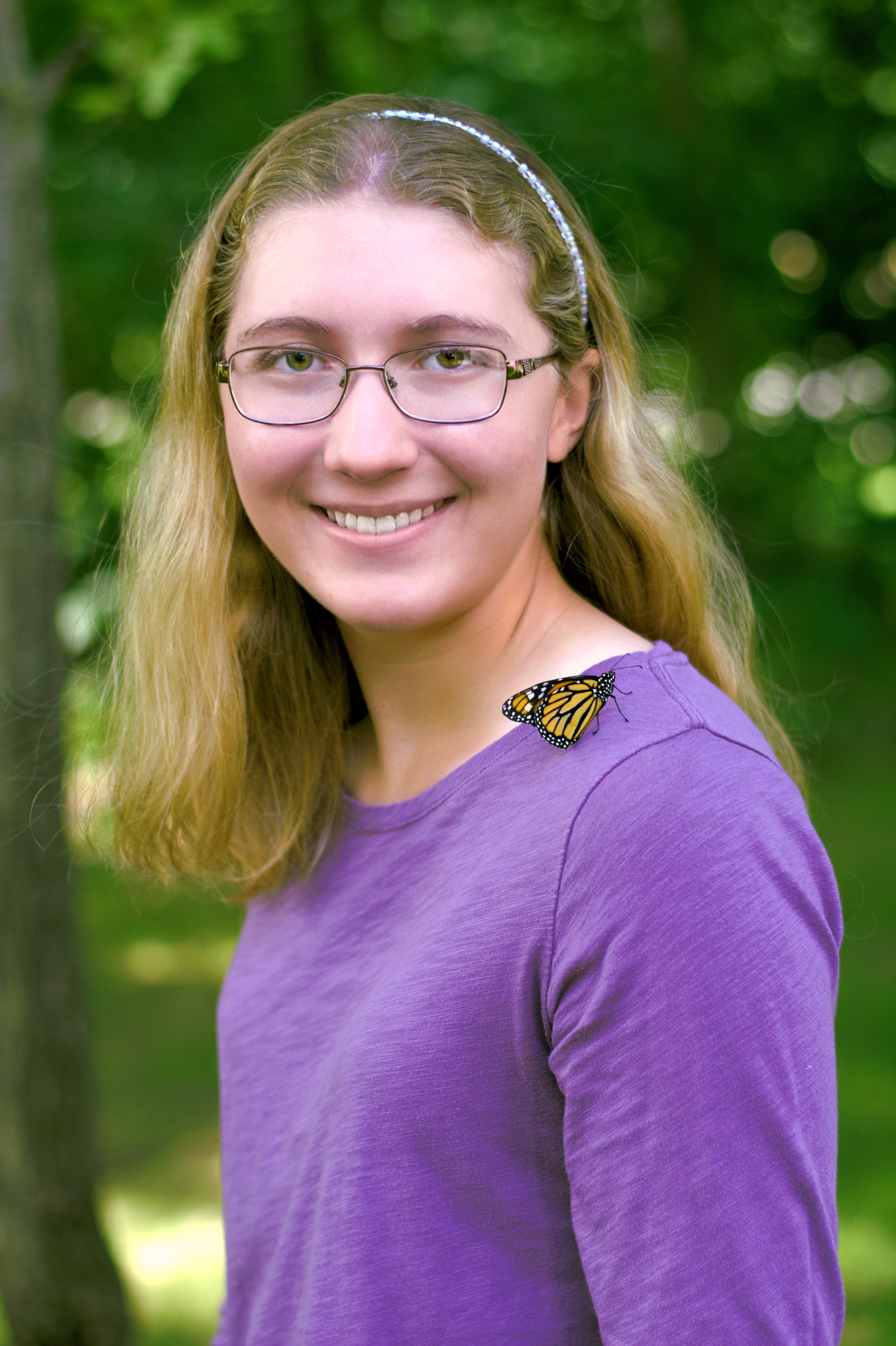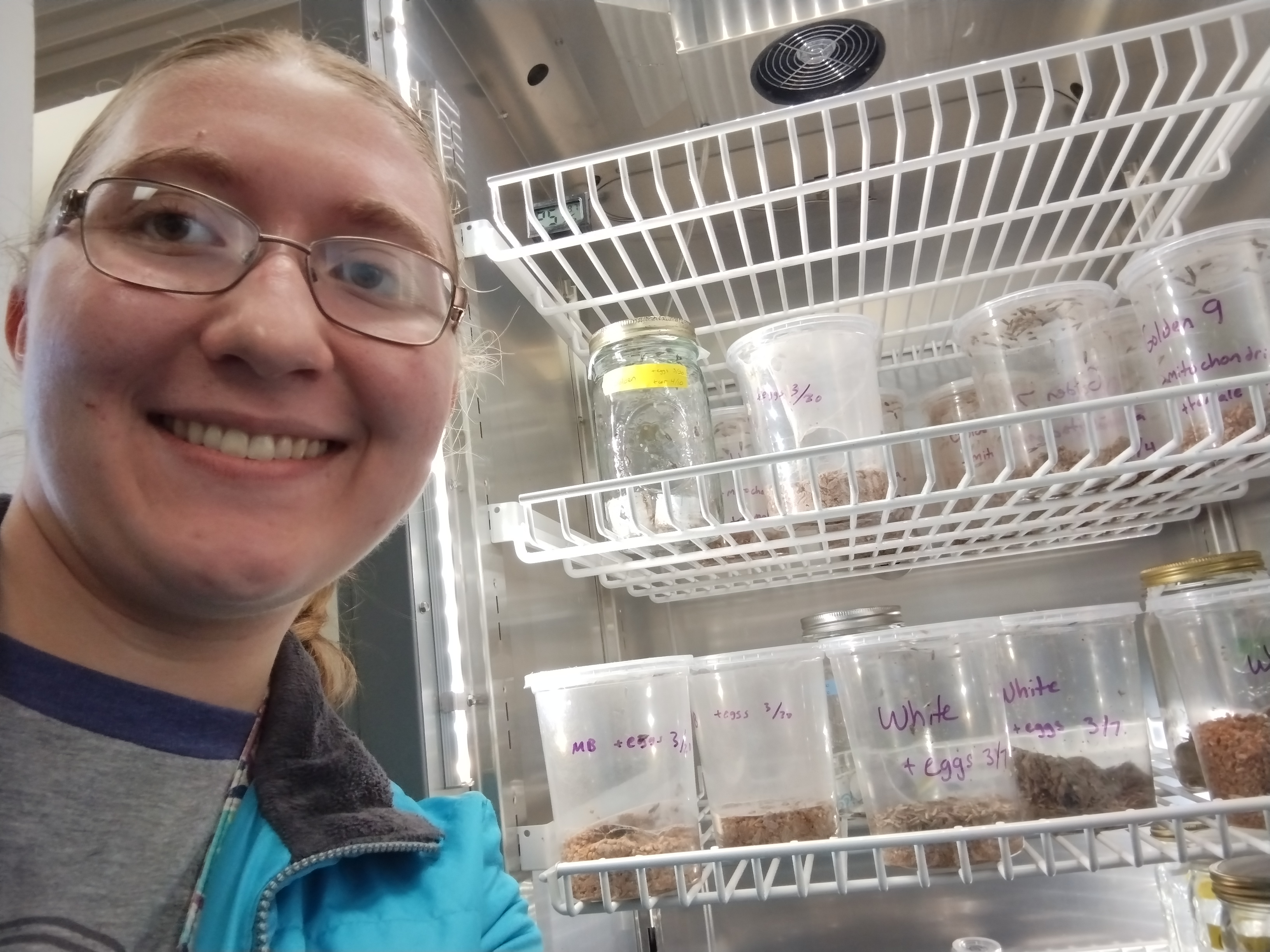Undergraduate Biology Student Researcher: Cailin Kessen
 Cailin Kessen is a junior majoring in Ecology, Evolution, & Organismal Biology with a minor in Spanish. She is also part of the KU Bioscholars program.
Cailin Kessen is a junior majoring in Ecology, Evolution, & Organismal Biology with a minor in Spanish. She is also part of the KU Bioscholars program.
Cailin’s Research at KU
“I'm working with Dr. Walters on Lepidoptera biology and right now I'm doing a longevity project where we're determining whether males or female moths live longer --the specific species we're working with is Plodia Interpunctella, commonly called the Indian Meal Moth, they are like a common pest species for pantries and households. Last year I was working on aging experiments in general, figuring out which [sex] lived longer and then this past year, I've been doing a lot of RNA sequencing to determine if there's molecular reasons for why one sex lived longer.”
How did you first become interested in doing this kind of research?
“It started off with an interest in Lepidoptera in general. I've always loved caterpillars and butterflies, so when I found out that Dr. Walters works with them, I was like ‘this is perfect!’ [The longevity research] was the current project he was working on when I joined the lab, and we just went from there.”
What does your research look like on a day to day basis?
“Currently, I'm learning programing languages like R and Shell, with them I'll be able to analyze the RNA sequencing data that I'm about to get back. [Previously when] I was doing the aging experiment, I spent a lot of time separating the caterpillars by male and female, keeping track of how long they lived, and compiling that data into documents and graphs before analyzing that data. Last semester, I lot of raising the caterpillars to a certain age and collecting them to get the RNA sample.”
Have you made any discoveries or findings?
“We've learned that for [the Indian Meal Moth] the males are significantly living longer than females. The average life span is about 13 days, the longest I've seen was 21 days. [Males live} about two days longer.
Moths and butterflies have a different zygocity with their sex chromosomes --the females are ZW and the males are ZZ-- which is the reverse of what it is in mammals. We're trying to determine if having the heterozygous chromosomes is what is causing the females to die sooner.
I've also been doing literature analysis --looking at other species and what people are showing for their longevity-- and I've seen a general trend that it varies by moth species which one lives longer. Some of the [species] females are living longer or the males are living longer, for some of them it's equal. We're trying to take all of that data [into account] and determine if phylogenetics has something to do with it”

Do you think for this particular species that there's a reason the males are living longer than the females?
“With RNA sequencing, we're trying to test the Toxic Y Hypothesis , but because it's in Lepidoptera, it would be more like Toxic W Hypothesis because that's the one chromosome that only the females have. Basically the hypothesis is that the W chromosome has more transposable elements than the Z chromosome, as the moth gets older, the transposable element expression will increase and then those random insertions into the genome will cause deleterious mutations that cause the females to die sooner and the males live longer because they have less of those transposable element expressions.”
What did you find most challenging about doing your project?
“For me, the hardest part about all of this is learning the programing languages. I'm definitely not very tech savvy. So it's been a challenge to try and learn those kind of things.”
What advice would you offer to other students?
“Don't hesitate to reach out and get involved in research, even if you're a freshman. It's possible and if you show interest and dedication, there's going to be something for you to do. Even if it gets hard, just persevere because you can accomplish anything if you just keep trying at it.”
“On the same note of Butterflies and Lepidoptera, I've been raising caterpillars since I was five years old. I also have a monarch way station at home and I helped make one through my library.”
What all goes into a monarch waystation?
“Lots of milkweed, caterpillars, and a whole bunch of flowering plants for the adults to feed on. My waystation has Goldenrod, Silky Aster, Coreopsis, & Blazing Star. It's also good to have something that blooms in the early summer and then late into fall to help the Monarchs during their migration”
What do you plan to do after you graduate from KU?
“I plan on going to grad school, but I'm still not sure where yet. However, my dream is to be a conservation entomologist.”